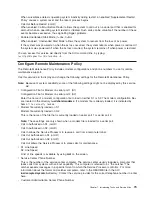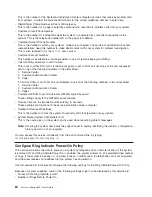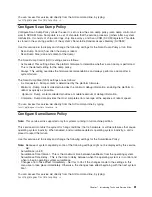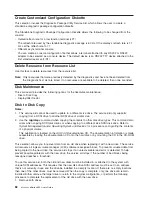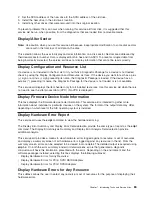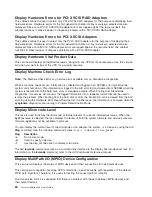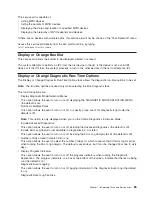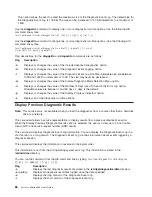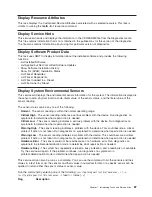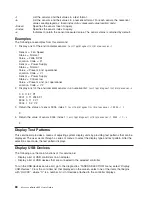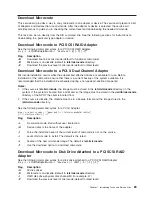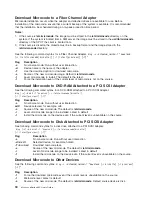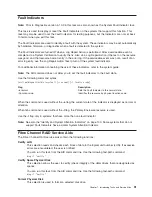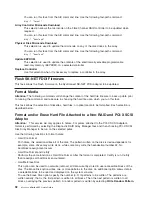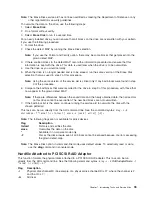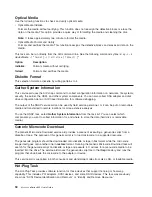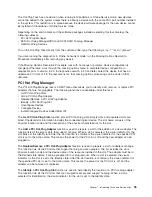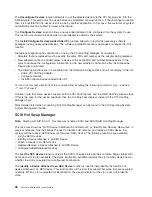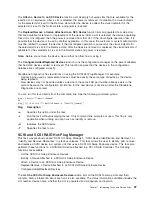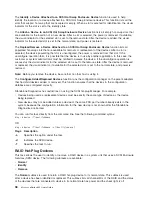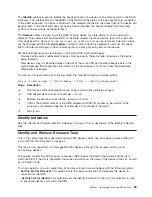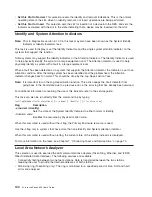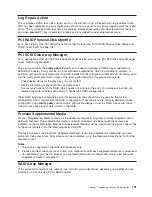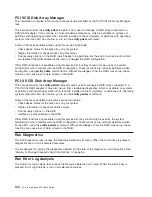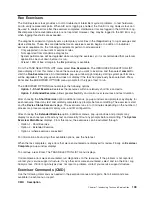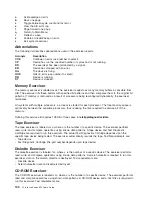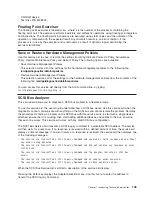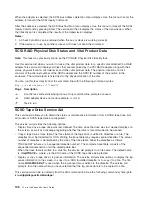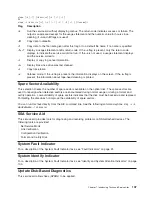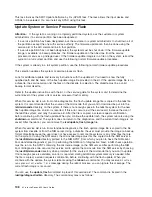
Note:
The
Erase
Disk
service
aid
has
not
been
certified
as
meeting
the
Department
of
Defense
or
any
other
organization’s
security
guidelines.
To
overwrite
the
data
on
the
drive,
use
the
following
steps:
1.
Select
Erase
Disk
.
2.
Do
a
format
without
certify.
3.
Select
Erase
Disk
to
run
it
a
second
time.
For
a
newly
installed
drive,
you
can
ensure
that
all
blocks
on
the
drive
are
overwritten
with
your
pattern
if
you
use
the
following
procedure:
1.
Format
the
drive.
2.
Check
the
defect
MAP
by
running
the
Erase
Disk
selection.
Note:
If
you
use
the
Format
and
Certify
option,
there
may
be
some
blocks
that
get
placed
into
the
grown
defect
MAP.
3.
If
there
are
bad
blocks
in
the
defect
MAP,
record
the
information
presented
and
ensure
that
this
information
is
kept
with
the
drive.
This
data
is
used
later
when
the
drive
is
to
be
overwritten.
4.
Use
the
drive
as
you
would
normally.
5.
When
the
drive
is
no
longer
needed
and
is
to
be
erased,
run
the
same
version
of
the
Erase
Disk
selection
that
was
used
in
step
2
of
this
procedure.
Note:
Using
the
same
version
of
the
service
aid
is
critical
only
if
any
bad
blocks
were
found
in
step
3
of
this
procedure.
6.
Compare
the
bad
blocks
that
were
recorded
for
the
drive
in
step
3
of
this
procedure,
with
those
that
now
appear
in
the
grown
defect
MAP.
Note:
If
there
are
differences
between
the
saved
data
and
the
newly
obtained
data,
then
all
sectors
on
this
drive
cannot
be
overwritten.
The
new
bad
blocks
are
not
overwritten.
7.
If
the
bad
block
list
is
the
same,
continue
running
the
service
aid
to
overwrite
the
disk
with
the
chosen
pattern(s).
This
task
can
be
run
directly
from
the
AIX
command
line.
See
the
command
syntax:
diag
-c
-d
deviceName
-T
"format
[-s*
fmtcert
|
erase
-a
{read
|
write}]
[-F]*
Note:
The
following
flags
are
not
available
for
pdisk
devices.
Flag
Description
fmtcert
Formats
and
certifies
the
disk.
erase
Overwrites
the
data
on
the
disk.
*
Available
in
no-console
mode
only.
-F
Forces
the
disk
erasure
even
if
all
blocks
cannot
be
erased
because
of
errors
accessing
the
grown
defect
map.
Note:
The
Erase
Disk
option
in
command-line
mode
uses
default
values.
To
selectively
read
or
write,
use
the
diag
command
in
console
mode.
Hardfile
Attached
to
PCI
SCSI
RAID
Adapter
This
function
formats
the
physical
disks
attached
to
a
PCI
SCSI
RAID
adapter.
This
task
can
be
run
directly
from
the
AIX
command
line.
See
the
following
command
syntax:
diag
-c
-d
RAIDadapterName
-T
"format
{-l
chId
|
-A
}"
Flag
Description
-l
Physical
disk
channel/ID
(An
example
of
a
physical
disk
channel/ID
is
27,
where
the
channel
is
2
and
the
ID
is
7.)
-A
All
disks
Chapter
7.
Introducing
Tasks
and
Service
Aids
93
Summary of Contents for p 655 series
Page 1: ...pSeries 655 User s Guide SA38 0617 03 ERserver...
Page 2: ......
Page 3: ...pSeries 655 User s Guide SA38 0617 03 ERserver...
Page 10: ...viii Eserver pSeries 655 User s Guide...
Page 14: ...xii Eserver pSeries 655 User s Guide...
Page 16: ...xiv Eserver pSeries 655 User s Guide...
Page 24: ...6 Eserver pSeries 655 User s Guide...
Page 32: ...14 Eserver pSeries 655 User s Guide...
Page 36: ...18 Eserver pSeries 655 User s Guide...
Page 90: ...72 Eserver pSeries 655 User s Guide...
Page 144: ...126 Eserver pSeries 655 User s Guide...
Page 208: ...190 Eserver pSeries 655 User s Guide...
Page 214: ...196 Eserver pSeries 655 User s Guide...
Page 217: ......

